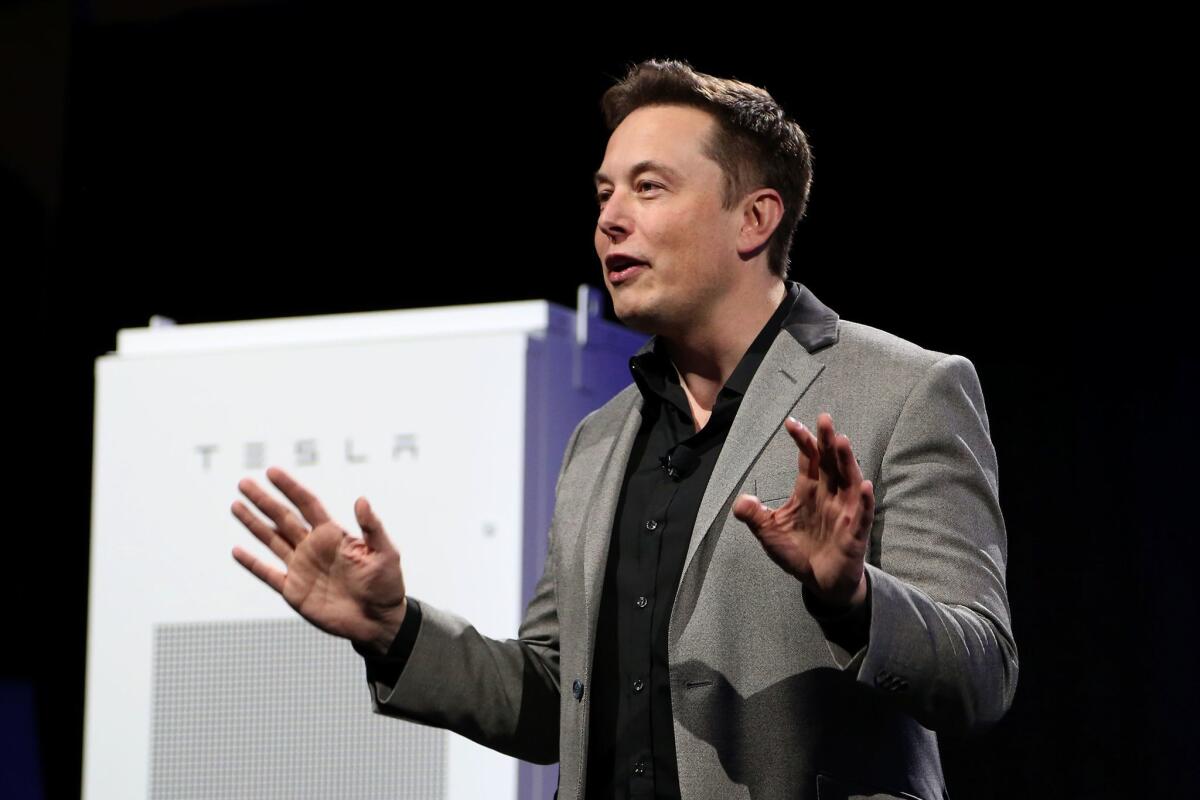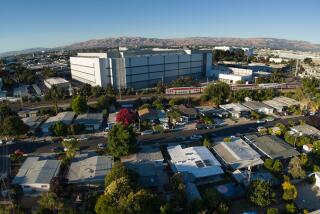Giant batteries, key to solar and wind power plans, start to get bank backing

- Share via
Big batteries have long been touted as the future of the electrical grid and a key to unlocking solar and wind power. But when entrepreneur David Cieminis sought financing for a storage project in California, a state desperate to wean itself off of fossil fuels, he couldn’t reel in a bank.
“A month or two ago, I wouldn’t have thought that they would have been interested,” says Cieminis, co-founder and chief commercial officer of Able Grid Energy Solutions. Like other battery startups, the company wound up relying on more expensive private equity for the project.
Little energy storage exists on the world’s electrical grids. The U.S. has about 1,400 megawatts of battery storage — equivalent to the output of two natural-gas-fired power plants — with most of it on the country’s electrical grids. Banks’ reluctance to finance such projects has contributed to the limited storage. But batteries are considered essential if states such as California want to rid their power grids of carbon emissions in the next three decades.
At the same time, manufacturing of lithium-ion batteries is scaling up rapidly to meet the growing demand for electric vehicles and large systems installed in power grids or at solar farms. As prices for lithium-ion batteries drop — they fell by half from 2016 to 2019, according to BloombergNEF — banks are taking another look.
Standalone storage deals also have been scarce because of the newness of the product — project contracts aren’t yet standardized, says Yayoi Sekine, an analyst at BloombergNEF. The size of a project can be a concern for banks, too. They prefer to avoid financings of $50 million or less, a threshold some early standalone systems didn’t cross.
Able Grid launched in 2017 to go after two large renewables markets: sunny California and windy Texas. It focused first on project development.
Cieminis approached banks early last year about a 50-megawatt project in the Lone Star State, but there were no takers. The banks said the Texas project lacked a long-term revenue stream, and that the company’s 11-megawatt project in California was too small. The lenders’ most common refrain about the California project: “I don’t want to write a check for $10 million,” Cieminis says he was told. By October, he gave up trying, and found an alternative funding source.
In early February, on a whim, he approached a few lenders that had completed storage financings. He was pleasantly surprised to find interest in two other Able Grid projects — 100-megawatt facilities in Southern California and Texas.
Recognizing the sizable opportunity in batteries, some project finance banks have recently begun supporting battery developments, and others expect to follow soon. The U.S. Energy Storage Assn. trade group is aiming to have 35,000 megawatts online by 2025. There are also climate change implications.
Banks aren’t the only companies that have approached battery financings cautiously. Others have concerns about being a first mover. “We don’t want to be the first company to go through their credit committee,” says Jeff Bishop, chief executive officer of Key Capture Energy, a battery storage developer.
Some early concerns among lenders have abated. Banks are now largely comfortable with lithium-ion batteries. “They’re the battery in your Tesla, in your iPhone,” says Mike Lorusso, a managing director at CIT.
CIT was a lead bank on a $140-million loan last month for a portfolio of projects developed by esVolta, a California-based developer. The deal came after about six months of talks between Chief Financial Officer Krish Koomar and banks. It’s esVolta’s first debt financing. Mitsubishi UFJ Financial Group Inc., one of the world’s leading project finance banks, expects at least three standalone battery deals in the U.S. this year, says Erik Codrington, a managing director.
Able Grid financed its first two projects with support from an undisclosed private equity firm. Such investors expect a return of at least 10%, whereas bank debt can often be had for 4% to 5%. Cieminis is more optimistic that his latest projects will attract bank finance.
“There’s a learning process,” he says. “It takes time for the market to ramp up.”
More to Read
Inside the business of entertainment
The Wide Shot brings you news, analysis and insights on everything from streaming wars to production — and what it all means for the future.
You may occasionally receive promotional content from the Los Angeles Times.










